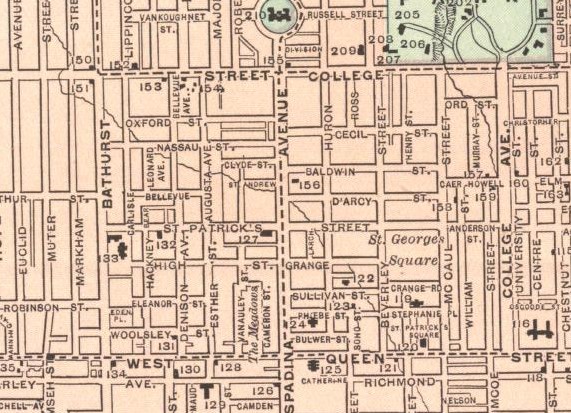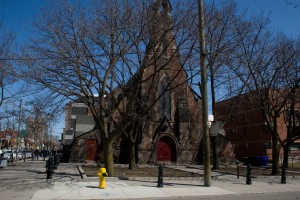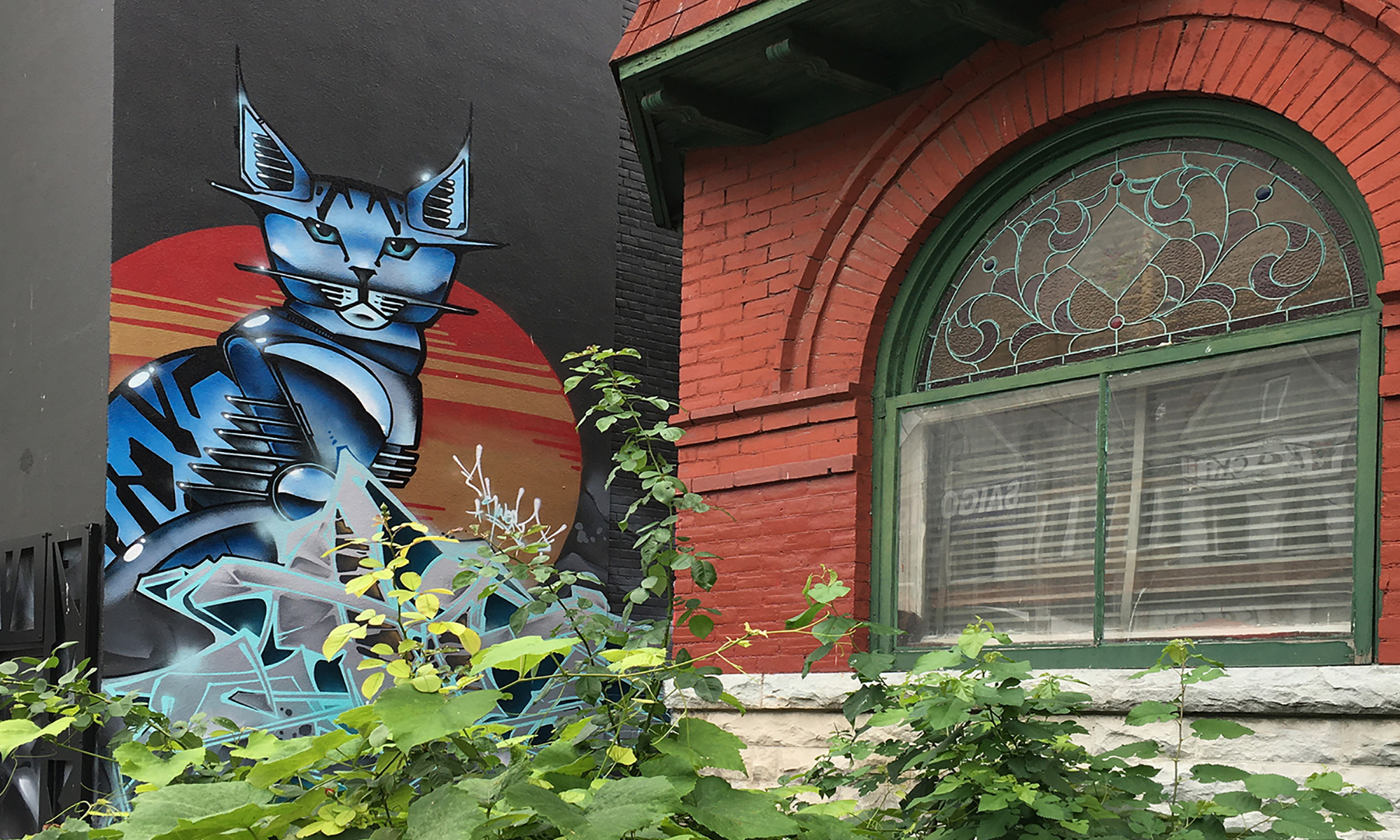
Robert Brittain Denison, George Taylor Denison’s third son, inherited the Bellevue property and made significant and enduring contributions to the development of Kensington Market as a neighbourhood. Educated at Upper Canada College, Robert helped his father run the family farm and worked as a land evaluator for Toronto University.[i] An early Toronto census listed his occupation as, simply, “gentleman.”[ii]
Very quickly after his inheritance of the property in 1853, Robert set about subdividing the estate “into individual plots suitable for building homes” and selling them off.[iii] Initially he offered large spacious lots for $350 apiece; when they did not sell, he further divided each one into three mini lots which were cheaper.[iv] In doing so, he “set precedent for [the neighbourhood’s] density,” giving rise to the narrow houses that characterize Kensington Market today.[v] As the estate was sold off, more roads were built to provide access to the new properties.[vi] The local street names are vestiges of Denison heritage from this period, named after family members or paying homage to the Denisons’ native England.[vii] Initially there was some fluidity to street names, with certain streets changing names many times; it was not until 1890, for instance, that the street originally called Elizabeth was renamed Kensington Avenue.[viii]
Although he inherited the property in 1853, Robert did not take up residence at Bellevue until 1865.[ix] When he finally sold the house in 1889 it was in significant disrepair and the property was worth more than the buildings on it; Bellevue was torn down the following year.[x] In 1887, two years before he sold Bellevue, Robert donated the square in front of the house to the city of Toronto as Bellevue Square park.[xi] When Robert Brittain Denison finally died in 1900, “he was no longer a landowner, and Kensington area was built up almost solidly from College to Dundas.”[xii]
St. Stephen of the Fields

One of Robert’s most significant and lasting contributions to the culture of Kensington is St. Stephen of the Fields Anglican church. Originally called Church of the Holy Martyr St. Stephen, its affectionate nickname reflects the surrounding geography at the time it was built.[xiii] In 1858, Robert donated the property and funds to build St. Stephen of the Fields, the first Anglican church west of Spadina.[xiv] The architect, Thomas Fuller, also designed the original parliament buildings in Ottawa; when the church burnt down in 1865, it was rebuilt with Henry Langley as the architect.[xv] In 1862, Robert donated more property adjacent to the church where a school was built, running in the years “before the public school system was operating fully.”[xvi]
Although St. Stephen’s came to have one of the largest congregations in Toronto, in his family history, Robert’s son remembers when the Denison family “composed the entire congregation.”[xvii] Not long after it opened, Robert became involved in a doctrinal argument with its first rector, Reverend J. H. McCollum, which was publicized in local newspapers.[xviii] The dispute took place in late 1860 and early 1861; in April 1861 “Reverend J. H. McCollum left for St. Tomas.”[xix] In 1863 St. Stephen of the Fields was purchased by the Anglican Church and consecrated.[xx]
[i] Denison 19
[ii] Taylor 112
[iii] Taylor 101, Cochrane 14
[iv] Taylor 116, Cochrane 25
[v] Myrvold 5, DeLaurentiis 3
[vi] Taylor 101
[vii] Taylor 101, Cochrane 25
[viii] Taylor 137
[ix] Denison 19
[x] Taylor 116, Lundell 33
[xi] Cochrane 25,
[xii] Ibid, 14
[xiii] DeLaurentiis 12
[xiv] Ibid, 12
[xv] DelAurentiis 12, Cochrane 15
[xvi] Cochrane 25
[xvii] Cochrane 21, Denison, 19.
[xviii] Cochrane 17, 20
[xix] Ibid, 17, 20
[xx] DeLaurentiis, 13
